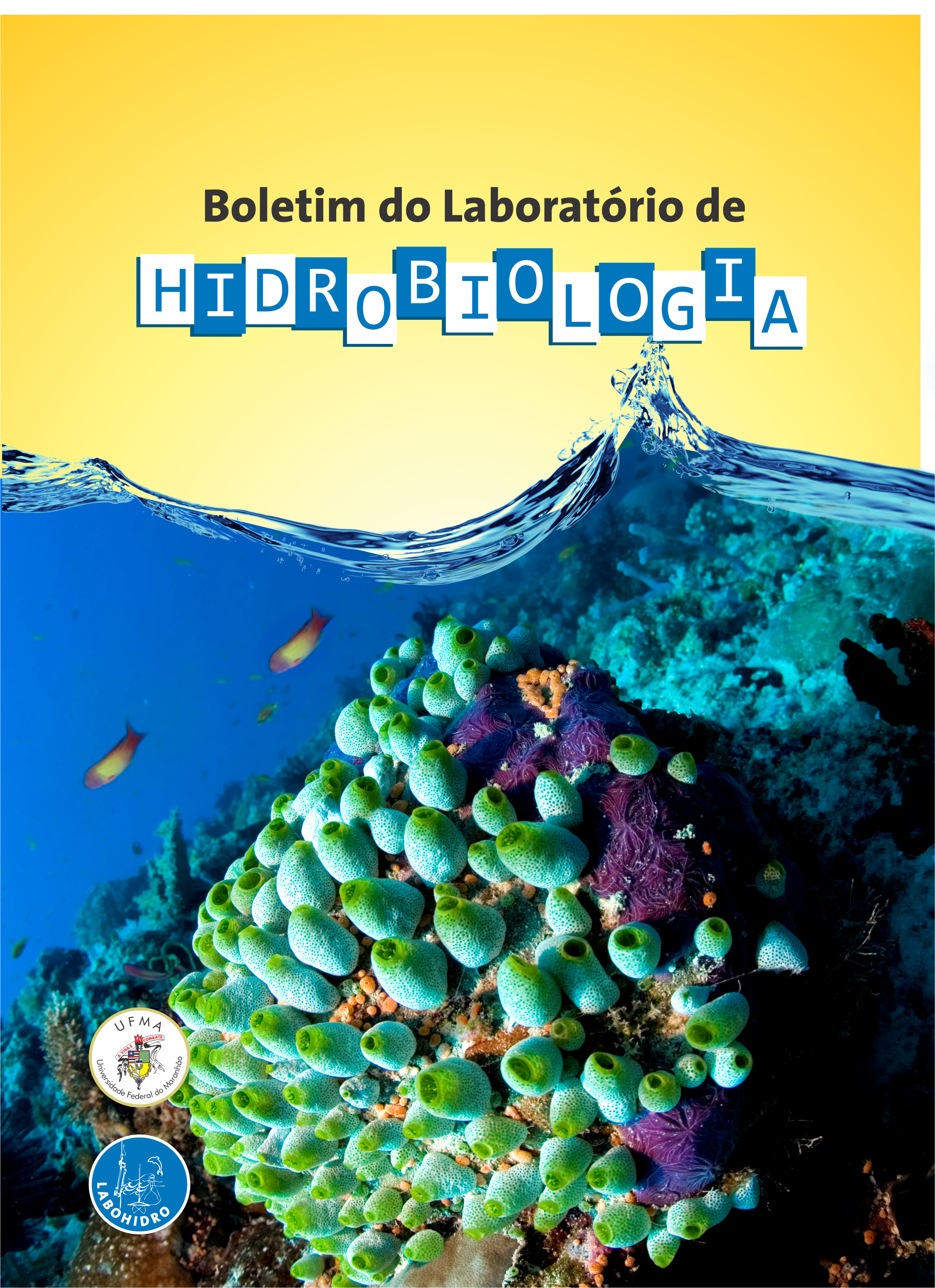ORGANIZAÇÃO ESTRUTURAL DA VEGETAÇÃO LENHOSA DAS DUNAS DA PRAIA DO CAOLHO, SÃO LUÍS, MARANHÃO
DOI:
https://doi.org/10.18764/1981-6421e2023.9Palabras clave:
Ecossistema costeiro, plantas arbustiva-arbóreas, antropizaçãoResumen
O objetivo desse estudo foi analisar a estrutura e a composição lenhosa da vegetação de dunas urbanas da praia do Caolho, São Luís, Maranhão. A análise estrutural da vegetação lenhosa foi realizada pelo método de ponto quadrante, totalizando 50 pontos. Foram medidas as plantas com diâmetro a altura do solo (DAS) ≥ 3cm. As plantas foram coletadas, identificadas, herborizadas e inseridas no Herbário MAR e PEUFR. Os parâmetros estruturais, o Índice de Shannon e Equabilidade de Pielou foram analisados. A análise estrutural resultou em 35 espécies, 31 gêneros e 20 famílias. As famílias com maior riqueza foram Fabaceae, Myrtaceae e Rubiaceae, com quatro espécies cada. O maior valor de importância foi encontrado em Attalea speciosa, Byrsonima crassifolia e Astrocaryum vulgare. O índice de Shannon foi 2,36 nat.ind-1 e a equabilidade de 0,66. A vegetação lenhosa da praia do Caolho é espaçada, com plantas de porte baixo e caules de calibre grosso. Porém, em áreas de dunas, os grandes diâmetros estão relacionados aos indivíduos perfilhados devido a soma de suas ramificações. Diante dos dados apresentados, enfatiza-se a importância de medidas de restauração e proteção das dunas urbanas para que o processo de resiliência garanta a continuidade dos padrões ecológicos da área.
Descargas
Citas
AMORIM, I.F.F., SANTOS, C.R., SANTANA, I.B.P.A., ARAUJO, A.C.M. & ALMEIDA JR., E.B. (2020). Espécies exóticas do estrato herbáceo das áreas de dunas na Ilha do Maranhão, Nordeste do Brasil. In: Santos-Filho, F.S.; Almeida Jr., E.B. (Org.). Biodiversidade do Meio Norte do Brasil: conhecimentos ecológicos e aplicações, 1ed. Curitiba: Editora CRV, v. 3 p. 15-28.
CARBONI, M., CARRANZA, M. L. & ACOSTA, A. (2009). Assessing conservation status on coastal dunes: A multiscale approach. Landscape and Urban Planning, v. 91(1), p.17–25.
COTTAM, C. & CURTIS, J. T. (1956). The use of distance measures in phytosociological sampling. Ecology, v. 37, n. 3, p. 451-460.
EL-ROBRINI, M., ROCHA, E.J.P., RIBEIRO, E.B.M., DE LIMA, G. DO SP DE; SANTOS, M.DE L.S., ALVES, MÃES & EL-ROBRINI, M.H.S. (2002). Atlas Oceanográfico na Área de Influência do Bloco Exploratório BM-BAR.
INMET. (2018). Instituto Nacional de Meteorologia. 2015. Disponível em: <http://www.inmet.gov.br/portal/>. Acesso em: 11 jul.
KÖPPEN, W. (1948). Climatologia: con un estudio de los climas de la terra. México. Fondo de Cultura Económica, México. 479p.
LORENZI, H., NOBLICK, L.R., KAHN, F. & FERREIRA, E. (2010). Flora brasileira: Arecaceae (Palmeiras). Instituto Plantarum, Nova Odessa. 382p.
NASCIMENTO, A.D., COSTA, L.B.D., LACERDA, D.M.A. & ALMEIDA JR., E. B. (2021). Woody plants phenology of the coastal dunes in eastern Amazon, Brazil. Brazilian Journal of Botany, v. 44, p. 741–752.
OESTREICH FILHO, E. (2014). Fitossociologia, diversidade e similaridade entre fragmentos de Cerrado stricto sensu sobre neossolos quartzarênicos órticos, nos municípios de Cuiabá e Chapada dos Guimarães, estado de mato grosso, Brasil. 88 f. Dissertação (Mestrado) - Curso de Programa de Pós-graduação em Ciências Florestais e Ambientais, Universidade Federal de Mato Grosso, Faculdade de Engenharia Florestal, Cuiabá, 2014.
PIRES, C.S., NASCIMENTO, A. D. & ALMEIDA JR., E. B. (2021). Dispersão de frutos e sementes do componente lenhoso nas dunas da praia de São Marcos, São Luís, Maranhão, nordeste do Brasil. Biota Amazônia, v. 11, n. 1, p. 68-74.
PRISCO, I., ACOSTA, A.T.R. & STANISCI, A. (2021). A bridge between tourism and nature conservation: boardwalks effects on coastal dune vegetation. Journal of Coastal Conservation, v. 25, n. 14, p. 2-12.
SANTOS-FILHO, F.S., ALMEIDA JR., E.B. & SOARES, C.J.R.S. (2013). Cocais: zona ecotonal natural ou artificial? Revista Equador, v.1, p. 02 -13.
SHEPHERD, G.J. (2010). FITOPAC. Versão 2.1. Campinas, SP: Departamento de Botânica, Universidade Estadual de Campinas - UNICAMP.
SOUZA, R.F., MACHADO, S.A., GALVÃO, F. & FILHO, A. F. (2017). Fitossociologia da vegetação arbórea do Parque Nacional do Iguaçu. Ciência Florestal, v. 27, n. 3, p. 853-869.
STOHLGREN, T.J., BINKLEY, D., CHONG, G.W., KALKHAN, M.A., SCHELL, L.D., BULL, K. A., OTSUKI, Y., NEWMAN, G., BASHKIN, M. & SON, Y. (1999). Exotic plant species invade hot spots of native plant diversity. Ecolology Monograph, v. 69, n. 1, p. 25–46.
VAN DER BIEST, K., NOCKER, L., PROVOOST, S., BOEREMA, A. J., STAES, J. & MEIRE, P. (2017). Dune dynamics safeguard ecosystem services. Ocean & Coastal Management, v. 147, p. 148-158.
Descargas
Publicado
Cómo citar
Número
Sección
Licencia
Derechos de autor 2024 Boletim do Laboratório de Hidrobiologia

Esta obra está bajo una licencia internacional Creative Commons Atribución 4.0.





